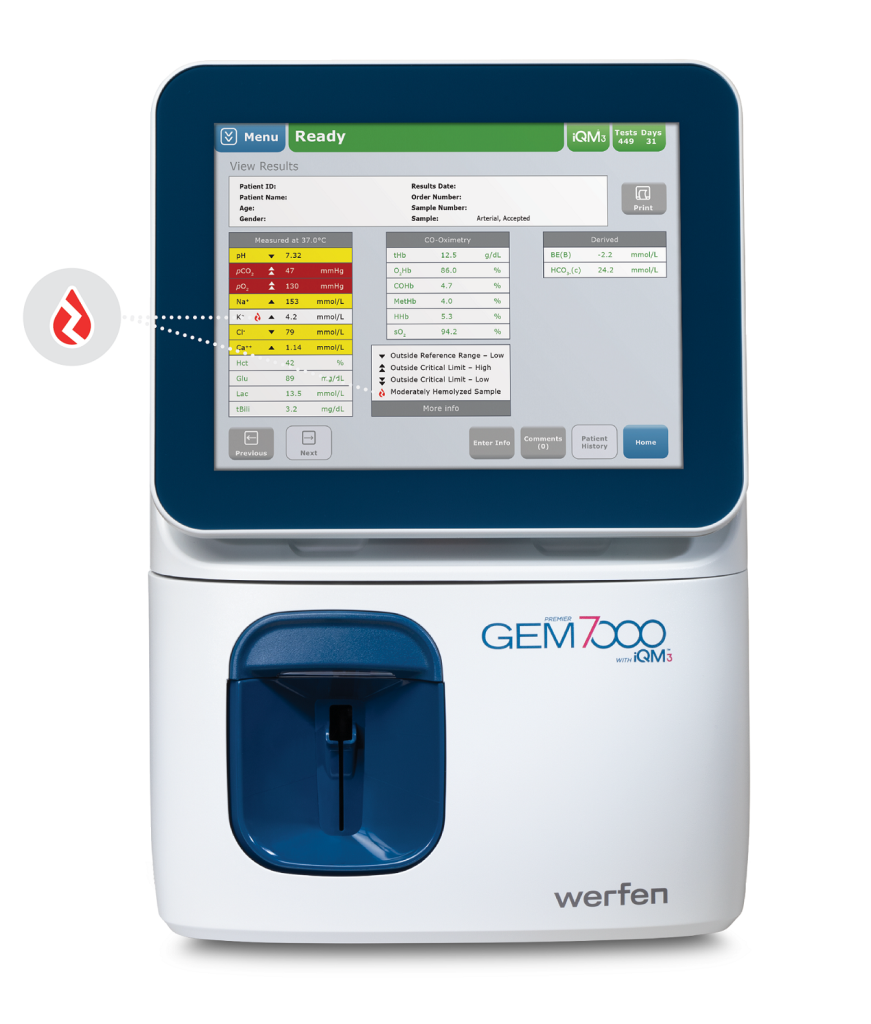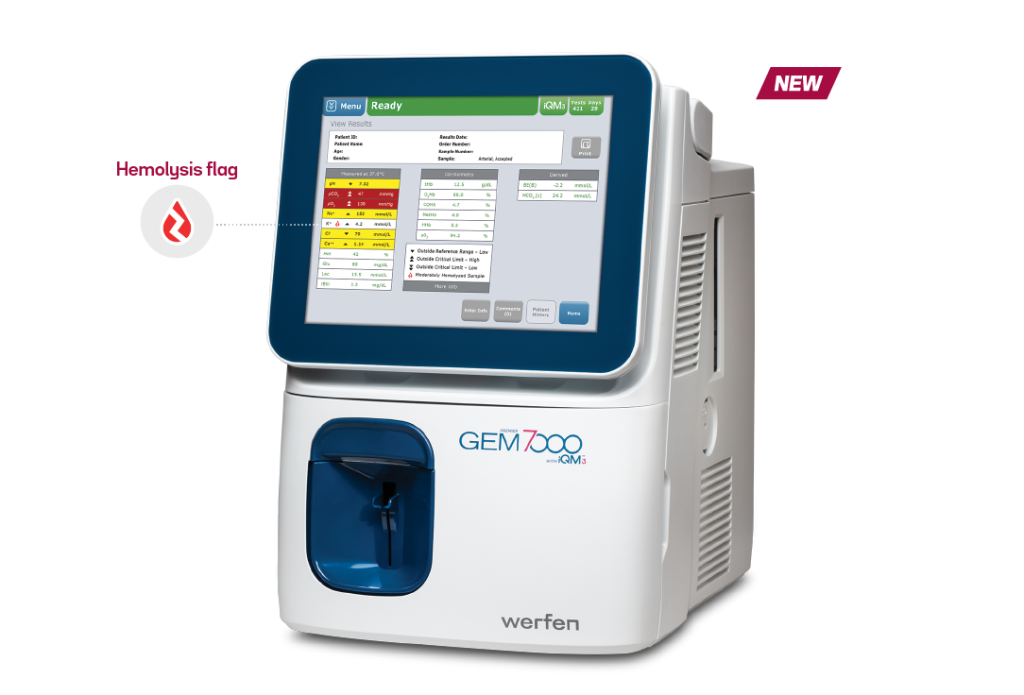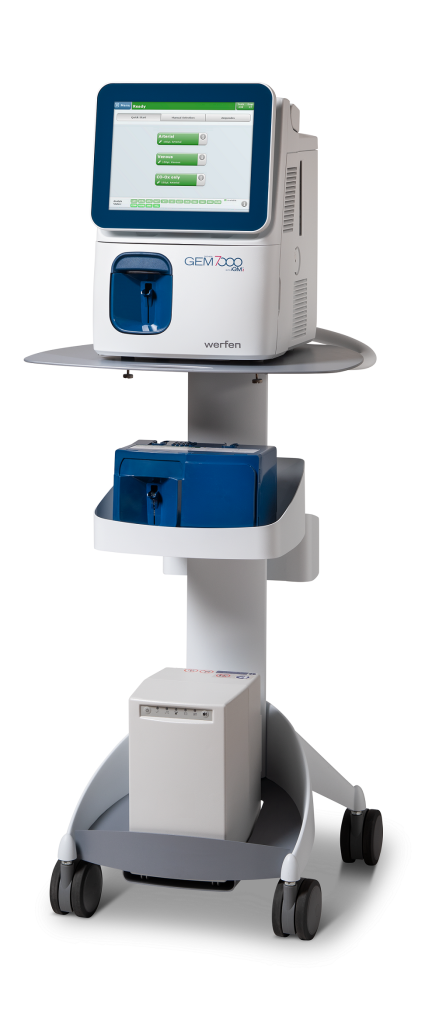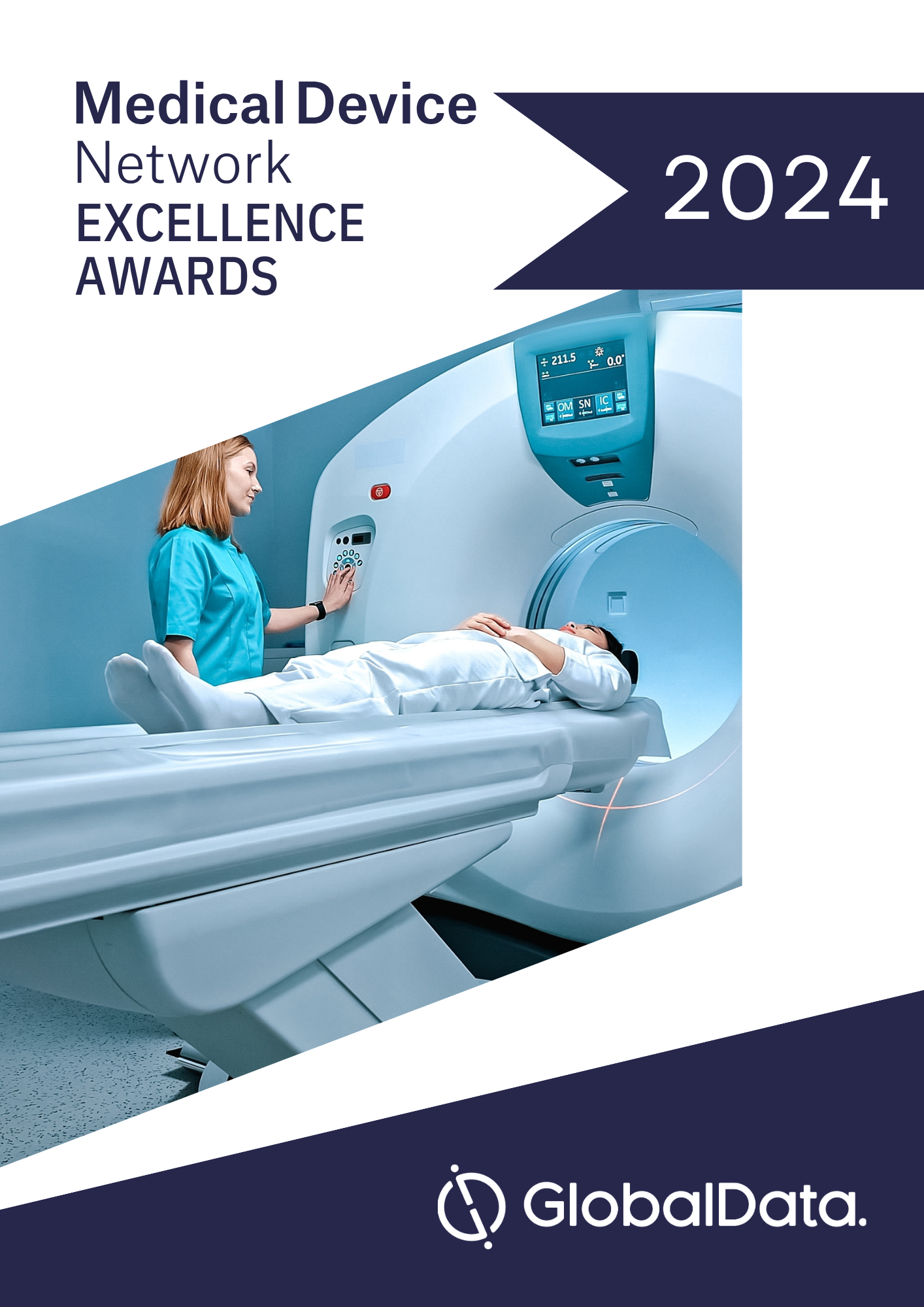
Werfen, a worldwide leader in Specialized Diagnostics, has won three awards in the 2024 Medical Device Network Excellence Awards, in the Innovation, Research and Development (R&D), and Product Launches categories, for its advanced blood gas system, the GEM® Premier™ 7000 with iQM®3.
The Medical Device Network Excellence Awards celebrate the greatest achievements and innovations in the industry. Powered by GlobalData’s business intelligence, the Awards recognize the people and companies that are driving change.
Werfen won the Innovation award for introducing integrated hemolysis detection in point-of-care (POC) blood gas testing, a significant leap in diagnostic accuracy, and the Product Launches award for successfully introducing the device into the market, which has greatly improved efficiency and patient care in acute settings. The R&D award recognizes Werfen’s dedication to this area of focus, which is evident in the advanced features of the GEM Premier 7000, as well as the company’s commitment to environmental responsibility and sustainable practices.
Innovation award: A leap forward in hemolysis detection
The GEM Premier 7000 with iQM3 has set a new standard in POC blood gas and electrolyte analysis as the first to offer integrated hemolysis detection in whole blood samples. This innovative feature uses acoustofluidic technology, alongside laboratory-standard photometric measurements to accurately flag hemolyzed samples, which are responsible for up to 70% of preanalytical errors.1 The importance of this advancement cannot be overstated, as hemolysis can lead to inappropriate patient management, increased length of stay, and increased costs, particularly in critical potassium measurements that are vital for cardiac function.2-6

The system can deliver lab-quality hemolysis detection at the POC without requiring additional sample volume or time. The GEM Premier 7000 has filled a significant gap in the market.
Expanding on this, the hemolysis detection module in the GEM Premier 7000 with iQM3 is fully integrated into the sample fluidic pathway, allowing for simultaneous measurement of blood gases, electrolytes, metabolites, CO-Oximetry, and hemolysis detection on a whole blood sample. This integration is a significant leap from traditional methods, which require separate analyzers and additional blood volume, leading to increased testing time and potential delays in patient care.
Impacting the market with advanced simplicity
The introduction of the GEM Premier 7000 with iQM3 has made a notable impact on healthcare delivery by addressing the critical need for integrated blood gas hemolysis detection. Werfen has provided a solution that is highly valued in acute care settings, such as labs, neonatal intensive care units (NICUs), and emergency departments (EDs), where the prevalence of hemolysis is high.
The system’s all-in-one GEM PAK cartridge and the GEMweb® Plus 500 Custom Connectivity have streamlined POC testing operations, reducing treatment delays and unnecessary redraws, ultimately improving patient care. These features have also optimized staff resources and reduced costs. The successful product launch, characterized by its significant market impact and the system’s ability to expedite critical patient management decisions, underscores the reasons for the Product Launches category award.

The GEM Premier 7000 with iQM3 detects hemolysis in just 45 seconds. The rapid detection is crucial in emergency situations where every second counts. Furthermore, the system’s continuous quality management ensures the integrity of every sample, automatically detecting and correcting errors in real-time, a vast improvement over traditional QC which can miss transient errors.
The advanced simplicity of the GEM PAK cartridge automates labor-intensive processes, offering a variety of menu and test-volume configurations to suit different clinical settings. Its 31-day use-life and room-temperature storage requirements further contribute to the system’s practicality and ease of use.
Ensuring clinical and environmental integrity
Werfen’s dedication to R&D is evident in the innovative design and functionality of the GEM Premier 7000. The system provides a wide range of measurements, including pH, pCO2, pO2, and various electrolytes, critical for diagnosing and treating patients who require acute care. The inclusion of CO-Oximetry parameters further enhances the system’s utility in assessing a patient’s oxygen delivery capacity.
In addition to clinical excellence, the environmental impact of the GEM Premier 7000 has been considered. The manufacturing site for the system is ISO14001-certified, reflecting Werfen’s commitment to environmental sustainability. The system’s 510(k) by the US FDA and ongoing clinical research demonstrate Werfen’s investment in ensuring the highest standards of quality and safety.
The GEM Premier 7000 with iQM3 is not only a product rooted in extensive R&D efforts, but also a reflection of Werfen’s commitment to sustainable practices. As a signatory of the UN Global Compact, Werfen aligns its operations with the UN Sustainable Development Goals, ensuring that the development and manufacturing of the GEM Premier 7000 contribute to a sustainable future.
The system’s clinical use and their active work on manuscripts for publication, further illustrate the commitment of Werfen’s R&D team, which are crucial for maintaining the device’s leading position in the market and for providing healthcare professionals with the tools they need to deliver the best patient care.
To learn more about GEM Premier 7000, visit: https://www.werfen.com/na/en/point-care-testing-devices/gem-premier-7000-iqm3-whole-blood-hemolysis-detection
Company Profile

Werfen is a leader in Specialized Diagnostics, committed to providing hospitals and commercial laboratories with innovative diagnostic solutions, for improved patient care. Founded in Barcelona, Spain in 1966, Werfen’s Clinical Areas of Focus include Hemostasis, Acute Care, Transfusion, Autoimmunity and Transplant.
Contact Details
Sally McCraven,
Sr. Director, WW Communications
Links
References
- Lippi G, Salvagno GL, Favaloro EJ, Guidi GC. Survey on the prevalence of hemolytic specimens in an academic hospital according to collection facility: opportunities for quality improvement. Clin Chem Lab Med. 2009;47(5):616–618. doi:10.1515/CCLM.2009.132.
- O’Hara M, Wheatley EG, Kazmierczak SC. The impact of undetected in vitro hemolysis or sample contamination on patient care and outcomes in point-of-care testing: a retrospective study. J Appl Lab Med. 2020;5(2):332-341. doi:10.1093/jalm/jfz020.
- Phelan MP, Ramos C, Walker LE, et al. The hidden cost of hemolyzed blood samples in the emergency department. J Appl Lab Med. 2021;6(6):1607–1610. doi:10.1093/jalm/jfab035.
- Phelan MP, Hustey FM, Good DM, Reineks EZ. Seeing red: blood sample hemolysis is associated with prolonged emergency department throughput. J Appl Lab Med. 2020;5(4):732–737. doi:10.1093/jalm/jfaa073.
- Wilson M, Adelman S, Maitre JB, et al. Accuracy of hemolyzed potassium levels in the emergency department. West J Emerg Med. 2020;21(6):272–275. doi:10.5811/westjem.2020.8.46812.
- Milutinović D, Andrijević I, Ličina M, Andrijević L. Confidence level in venipuncture and knowledge on causes of in vitro hemolysis among healthcare professionals. Biochem Med. 2015;25(3):401–409.



